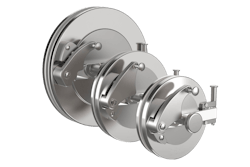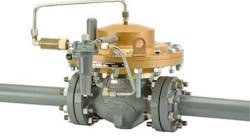The goal of regulatory agencies that govern the manufacture of life science products around the world is to provide guidance and direction for operators within the industry. This guidance is designed to help them develop manufacturing practices that result in optimized product quality, improved safety and the avoidance of human errors. Admittedly, navigating the regulatory landscape can be intimidating and time-consuming, but ignoring or misinterpreting important regulations can have potentially significant consequences. This makes intimate knowledge of, and adherence to, all relevant regulatory tenets a front-of-mind concern for operators in the life-science realm.
In the United States, the U.S. Food & Drug Administration (FDA) oversees the production of life-science products. In this role, the FDA develops and disseminates Current Good Manufacturing Practices (CGMP). According to the FDA’s definition, CGMPs rely on systems that “assure proper design, monitoring, and control of manufacturing processes and facilities.” With that in mind, adherence to CGMP regulations will help “assure the identity, strength, quality and purity of drug products by requiring that manufacturers of medications adequately control manufacturing operations.” If adequately put into practice, this system of controls will “help prevent instances of contamination, mix-ups, deviations, failures and errors,” in the process assuring that all finished life science products meet their established quality standards.
The FDA has the power to issue non-conformity notices to companies that fall out of compliance, potentially resulting in the disallowance of finished pharmaceuticals being sold to the public. The FDA most commonly issues non-conformity notices for the following reasons:
- Improper manufacturing methods
- Facilities that do not feature the proper manufacturing controls
- Unsafe or unsanitary processing methods
- Inadequate packaging
- Unclean or unsafe holding areas
The FDA actively develops and enforces new regulations related to CGMPs, which is yet another reason that manufacturers of equipment and systems – such as Rapid Transfer Ports (RTPs) – used in the manufacture of life-science products must prioritize staying abreast of current regulations and regulatory developments.
Globally, the FDA is seen as a leader both in developing and enforcing regulations relevant to the life-science arena. As a result, many countries around the world have adopted FDA rules as their own. Uniform standards and requirements can help ease the burden on manufacturers of life-science transfer systems to produce products that are regulatorily compliant around the globe.
Equipment manufacturers and operators within the life sciences must also be aware that regulations are subject to a constant series of reviews and revisions. For example, in 2022, the European Union completed a revision of its CGMP Annex 1, which governs the “Manufacture of Sterile Medicinal Products.” This revision includes new requirements, as well as additional detail related to many of the requirements included in the prior version of Annex 1, which was released in 2008. This just underscores that it is imperative that the manufacturers and users of transfer systems be up to date on the latest regulatory rules and requirements relevant to the products they sell.
To this end, CRL has developed its RTP technologies with the latest regulatory developments top-of-mind. CRL’s products promote and optimize operator safety and efficiency, along with product consistency. CRL also works directly with its customers to identify the best solutions, from standard product offerings to customized development, which can help ensure the creation of the best solution possible for safe and confident handling of every application need.
Specifically, a CRL RTP consists of an Alpha flange, or female port, designed to be mounted on the wall of a cleanroom, glovebox or isolation chamber, and a Beta flange, or male port, that is docked onto the Alpha flange via a bayonet (connection) action. When the Beta flange is docked to the Alpha flange, the door can be opened only when both the male and female part are docked correctly. The RTP uses a double-door design principle to help prevent contamination from occurring: The port into the container may not be opened until the Alpha and Beta ports are connected properly, while the port to the container cannot be opened until the Alpha and Beta ports are docked together, ergo the “double-door” principle.
There are two possible methods of connection between the Alpha and Beta flanges: 1) a non-rotating Alpha is immovably attached to the wall of the isolator and the Beta flange is rotated onto the Alpha flange in order to create the connection; this style is used in 99% of cases; and 2) a rotating Alpha is connected to a fixed Beta flange; this type of setup is usually used when the Beta is very heavy or it is filled with fluids and can’t rotate.
There are also two types of door openings that can be used. The most prevalent is an internal door-opening system, where a technician physically located inside the isolator manually opens the door. As CGMPs evolve to suggest that a person’s hand should not play a role in the handling of sterile/aseptic products or components, though, external door openings have become more common. In this design, the door is opened from outside the isolator, removing human handling of the sterile/aseptic product or component being handled.
The RTP system’s Beta assembly is generally a removable stainless-steel or plastic container or plastic bag holding the material that needs to be transferred into isolation; it plays a vital role in helping to ensure the safe, sterile transfer of these products. The style of Beta assembly chosen depends on the material-transfer operation that must be performed, and CRL offers 10 different styles of Beta assemblies to address its customers’ varied needs.
Finally, in addition to overseeing its complete portfolio of RTP models, CRL also works directly with its customers to identify the best solutions, from standard product offerings to customized development, which can help ensure the creation of the best solution possible for every application need.
Jim Peterson is a Sales Manager for Central Research Laboratories (CRL), Red Wing, Minnesota. He can be reached at [email protected]. CRL has more than 75 years of experience in the development of remote-handling systems, including Telemanipulators, Transfer Systems, Glove Ports and Waste Drum Transfer Systems. CRL’s industry-leading technology helps its customers safely and efficiently handle hazardous and sterile materials in nuclear and life science applications around the world.



